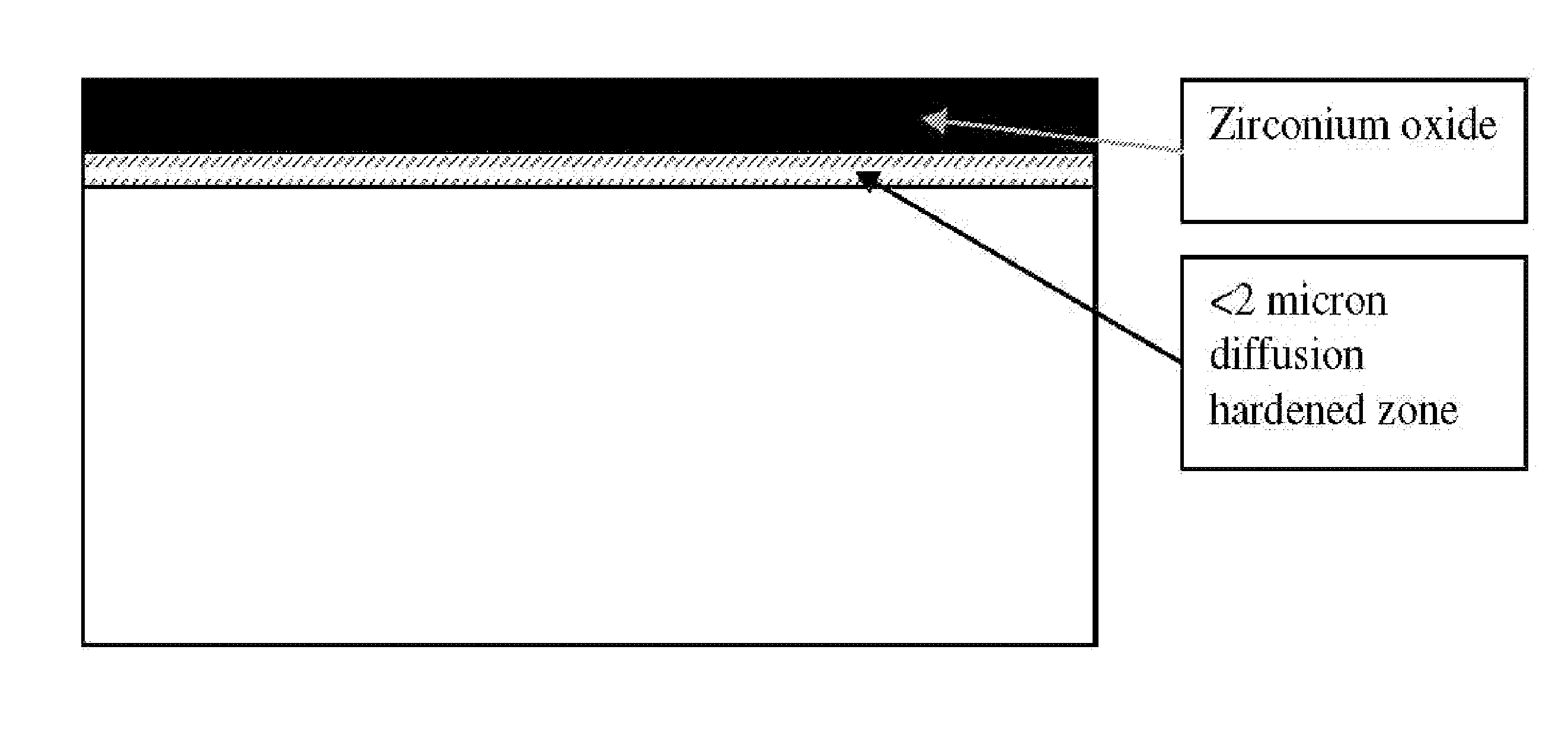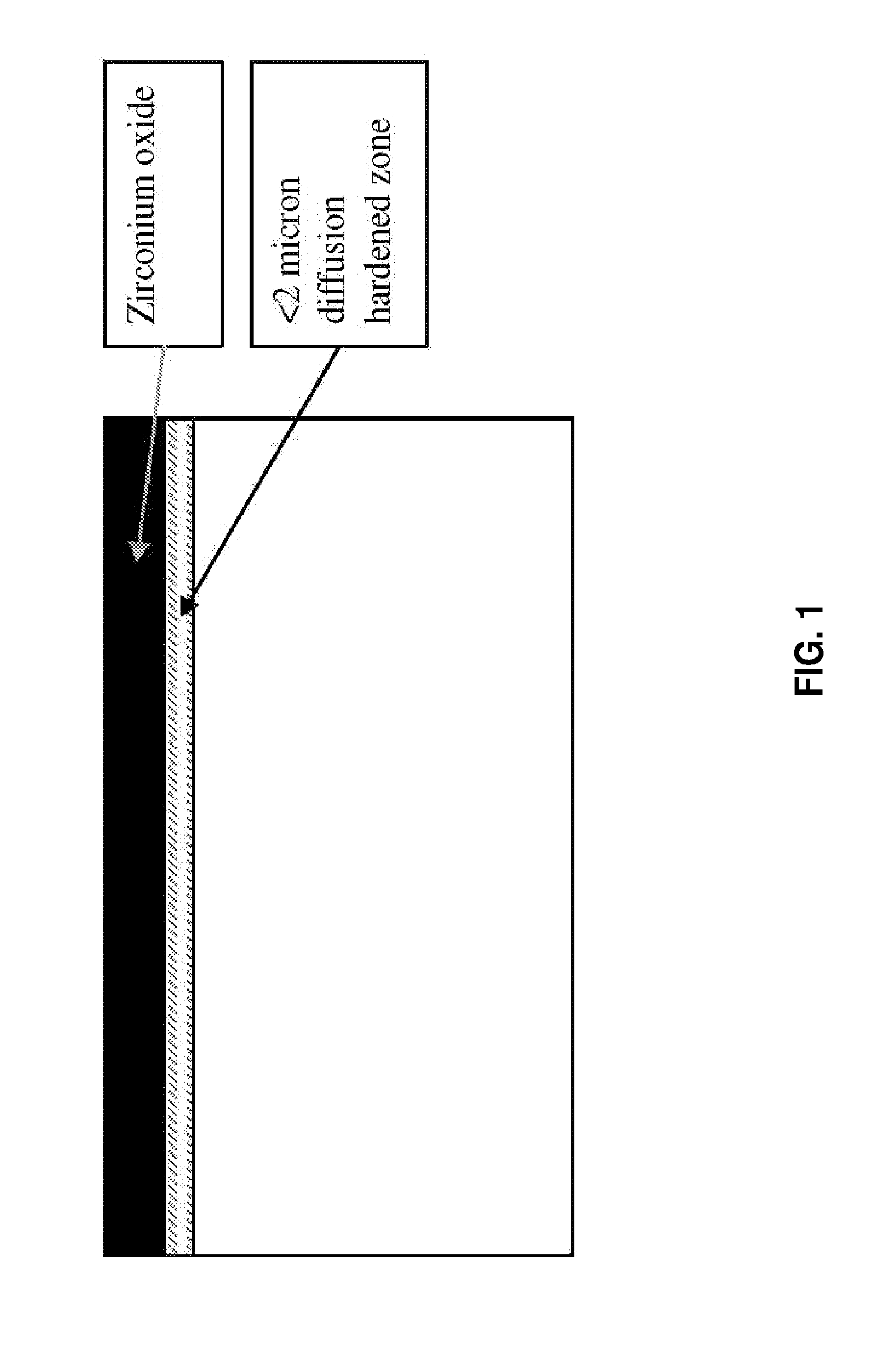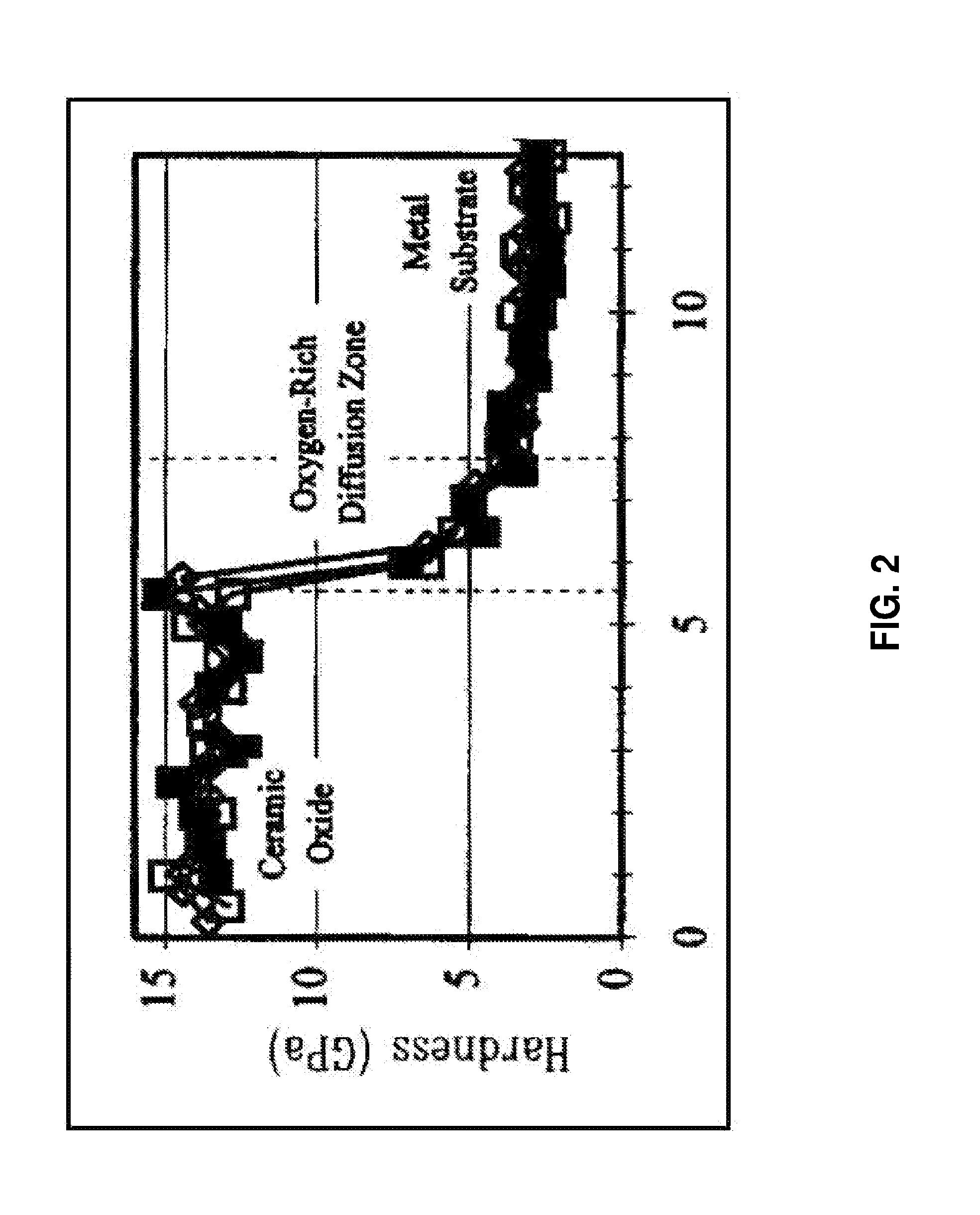Ceramic layered medical implant
a medical implant and ceramic layer technology, applied in the field of ceramic layer metallic medical implants, can solve the problems of large dimensional changes, surface oxide particulates spalling or removal, and the oxide film produced does not exhibit particularly high abrasion resistan
- Summary
- Abstract
- Description
- Claims
- Application Information
AI Technical Summary
Benefits of technology
Problems solved by technology
Method used
Image
Examples
Embodiment Construction
[0066]As used herein, “a” or “an” means one or more. Unless otherwise indicated, the singular contains the plural and the plural contains the singular. For example, when referring to “a” layer, it should be understood to mean “one or more” layers, unless it is otherwise indicated or clear from the context that reference is being made to a single layer.
[0067]As used herein, “zirconium alloy” is defined broadly, and includes alloys having at least 5% (w / w) zirconium. In addition to zirconium, the alloys may comprise one or more of titanium, hafnium and niobium. The alloys can be polycrystalline or amorphous or single crystals or combinations of same.
[0068]As used herein, “ceramic” is defined as a chemical compound of a metal (or a metal constituent in an alloy) and one or more non-metals, including carbon, oxygen, nitrogen, boron, and combinations thereof. As used herein, “ceramic layer” is defined as a stratum of material consisting of ceramic which forms a part of a greater material...
PUM
| Property | Measurement | Unit |
|---|---|---|
| temperature | aaaaa | aaaaa |
| temperature | aaaaa | aaaaa |
| temperature | aaaaa | aaaaa |
Abstract
Description
Claims
Application Information
 Login to View More
Login to View More - Generate Ideas
- Intellectual Property
- Life Sciences
- Materials
- Tech Scout
- Unparalleled Data Quality
- Higher Quality Content
- 60% Fewer Hallucinations
Browse by: Latest US Patents, China's latest patents, Technical Efficacy Thesaurus, Application Domain, Technology Topic, Popular Technical Reports.
© 2025 PatSnap. All rights reserved.Legal|Privacy policy|Modern Slavery Act Transparency Statement|Sitemap|About US| Contact US: help@patsnap.com



